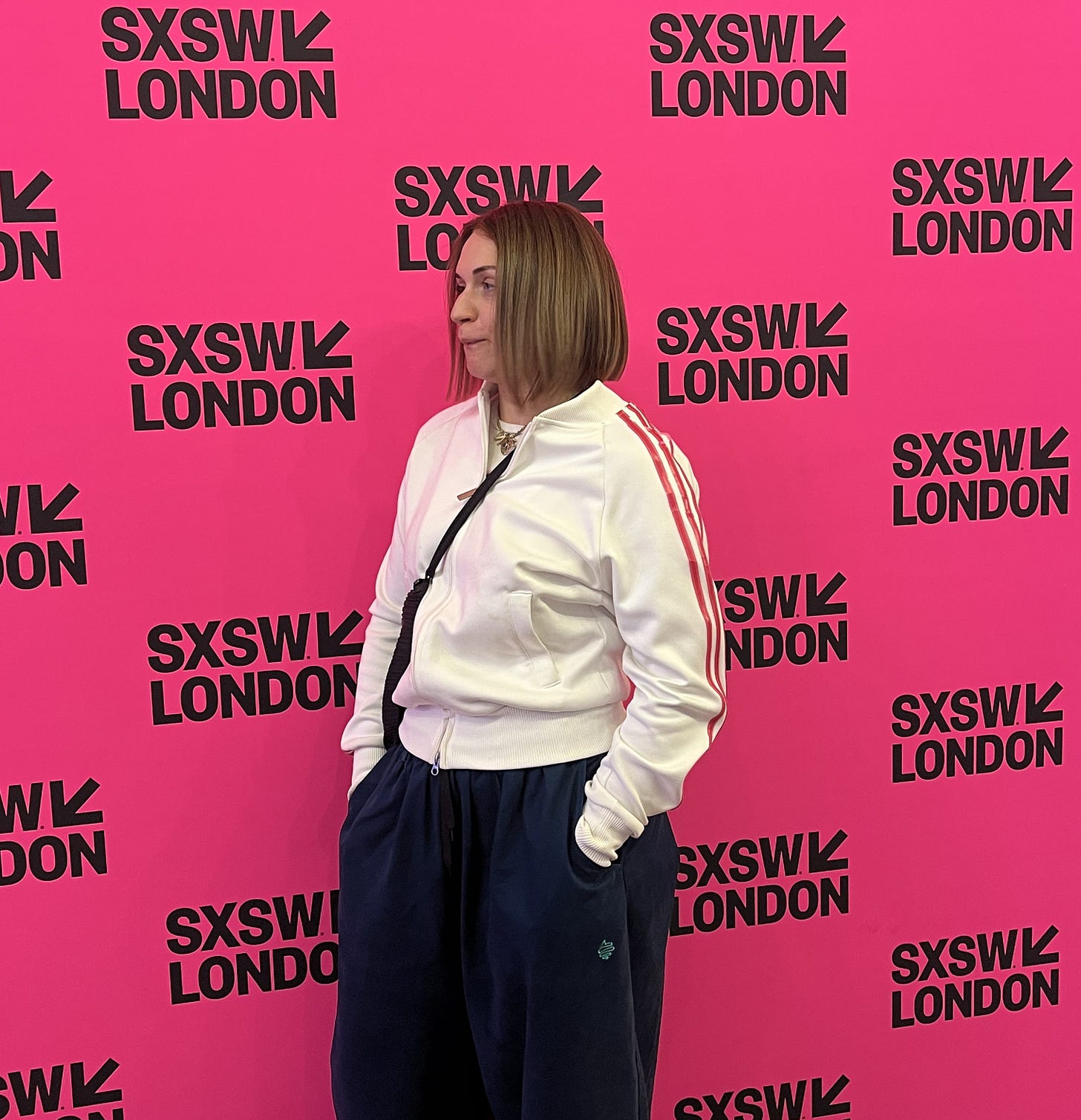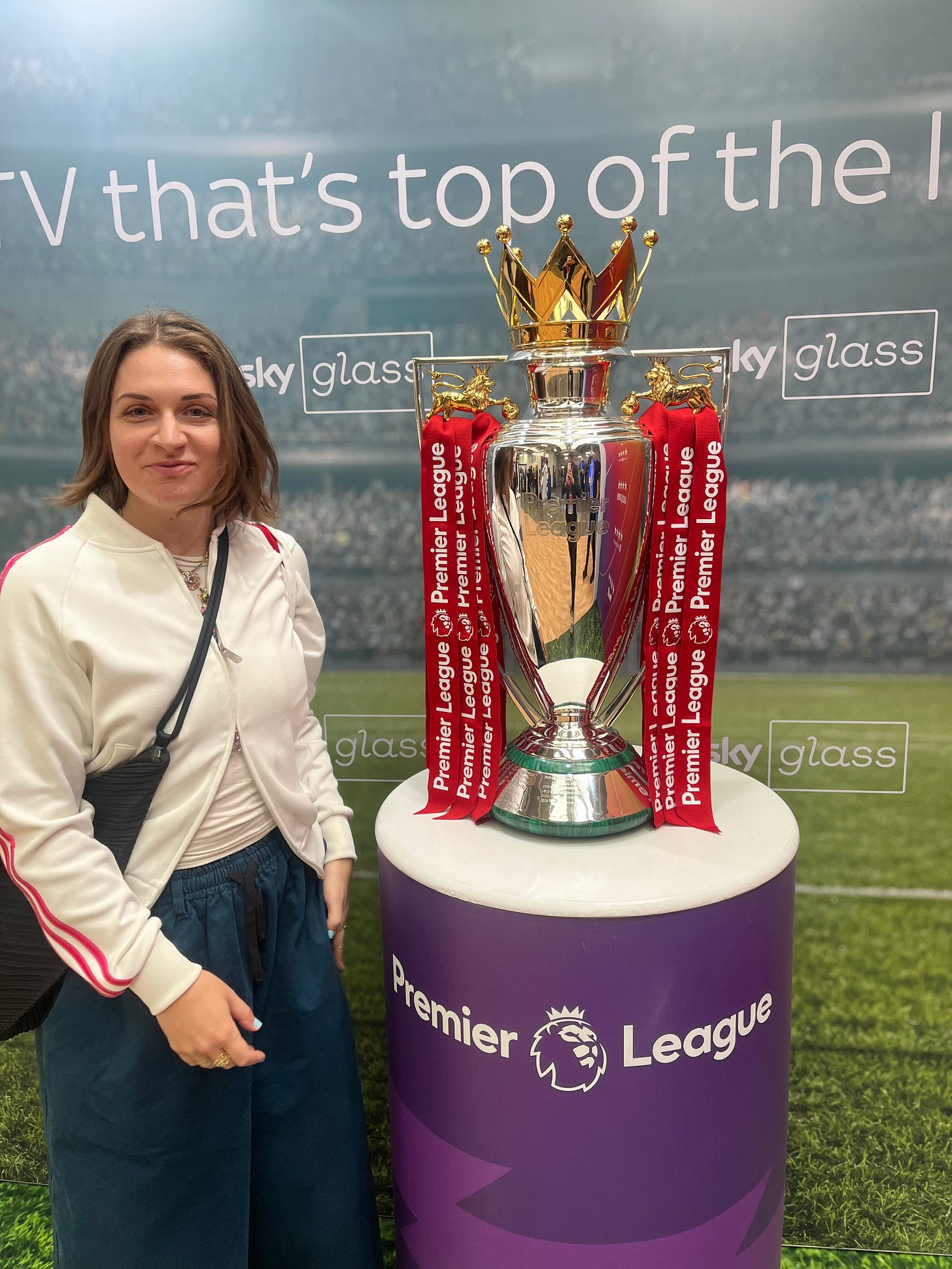ISSUE 020
IN SITU this week looks at SXSW's London debut, and why it doesn't hurt to keep an eye on the little guy sometimes.
IN SITU is a platform dedicated to the intersection between culture, brand strategy and music. Sometimes the focus will be on one strand more than another, but always sitting in that sweet spot.
ISSUE 020 AT A GLANCE
LONG READ Cultural observation opinion piece: Reflecting on SXSW’s First Trip to London
VERBATIM Quote from cultural tastemaker: Niamh Kelly, Co-Founder of AKA
SHORT READ Belief relating to strategy and/or insight: Core Belief #15: Don’t Lose Sight of the Little Guy
MUSIC CORNER Album recommendation: Lorde - Virgin
LONG READ
REFLECTING ON SXSW’S FIRST TRIP TO LONDON
June has been a long month, so please forgive the gap in IN SITU issues, and therefore, the delayed reaction to SXSW’s first London event. Running an ambitious almost full week from 2nd-7th June, SXSW took flight from its home in Austin and landed with aplomb in London, covering music, screen & conference elements across Shoreditch, day and night.
For context, I attended the OG SXSW for three consecutive years, 2017-2019, as a music journalist. Each year had its own identifiable experiences, namely year 1 being a chaotic but very fun whirlwind of interviews, gigs and parties with my friend & photographer Matt Ogilvie. Year 2 was much more organised, with a spreadsheet for interviews and events, and still a magical time. Year 3 was solo and I was that bit older, so it was a little slower paced with less interviews and more fan moments.
But each and every time, the common denominators were meeting amazingly creative people from all over the world, dipping into shows and finessing ourselves into events we had no place in being. There was a sense of never-ending entertainment at every turn, inevitably missing out on one thing to catch another, and feeling like we were in a bubble for 4 days, even though we were in a sizeable city.
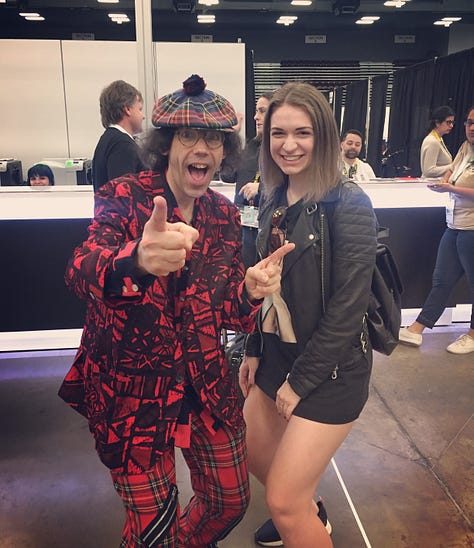
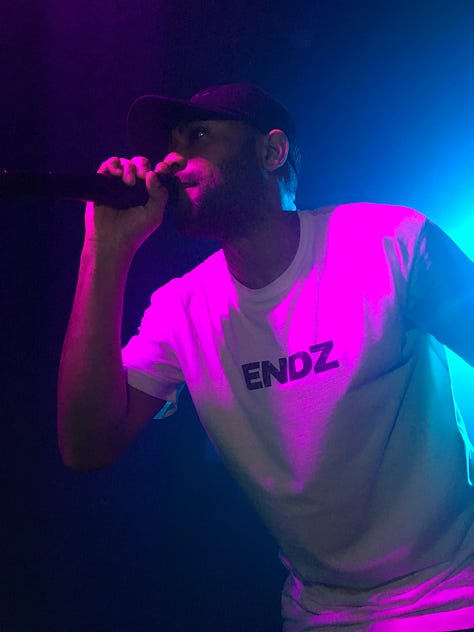
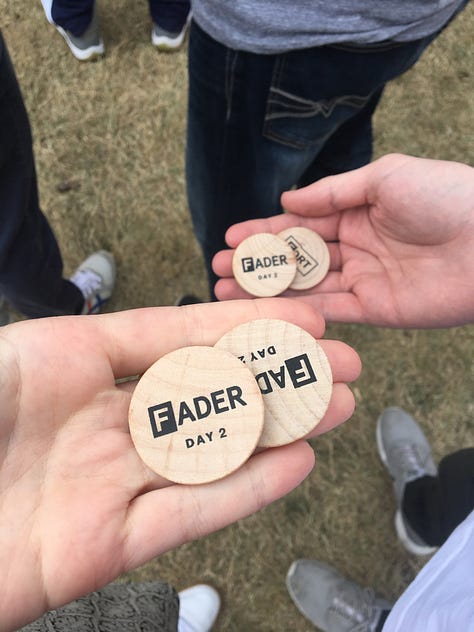


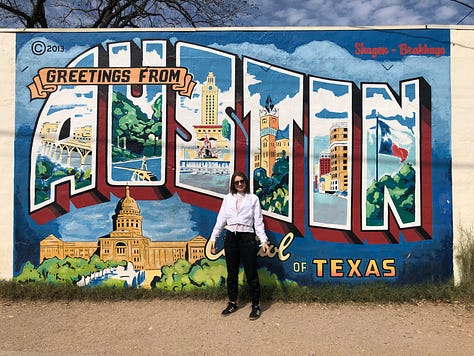
I didn’t expect London to feel the same - my expectations were not that skewed. And to be honest, I didn’t really know how London would fare as a host, even though everything was within a 20 minute walking radius, it just doesn’t feel the same as jaunting around Austin.
I think it was obvious to many even before London kicked off, that this was an ambitious schedule. Between three verticals, day and night, for 6 days, it was completely packed. Although admirable, it felt potentially unnecessary given its maiden voyage, and most people having never attended the original SXSW wouldn’t be comparing it anyway. As a side note, I reckon a majority of people (including overheard staff members) didn’t even know how to pronounce SXSW (“South By South West”) and were spelling out the letters…We’re on a learning curve out here!
The second thing that felt apparent both before and during the week, was that this was pretty corporate. This was not about spotlighting the little guy and discovering someone new, which was truly the essence of Austin. Although emerging acts were on the bill, and there were partnerships with platforms like Eastern Margins and Mixtape Madness who hero fresh talent, that didn’t feel like the overarching theme. With programming aimed at business folk, coupled with an overly complicated and overpriced ticketing structure, it felt inaccessible for most individuals just wanting to see something creative and inspirational.

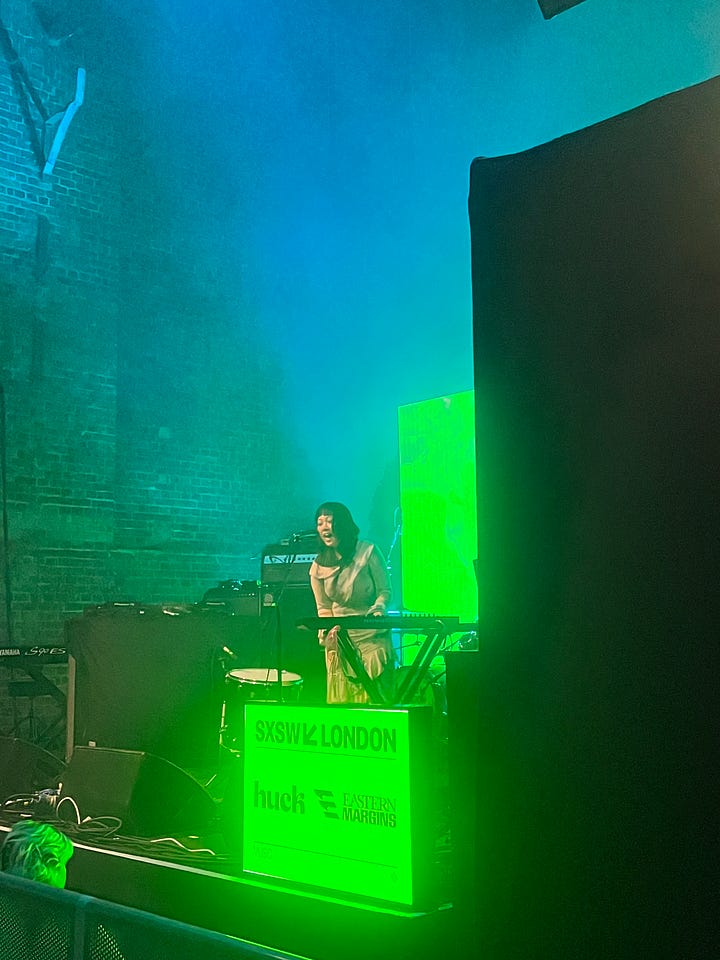

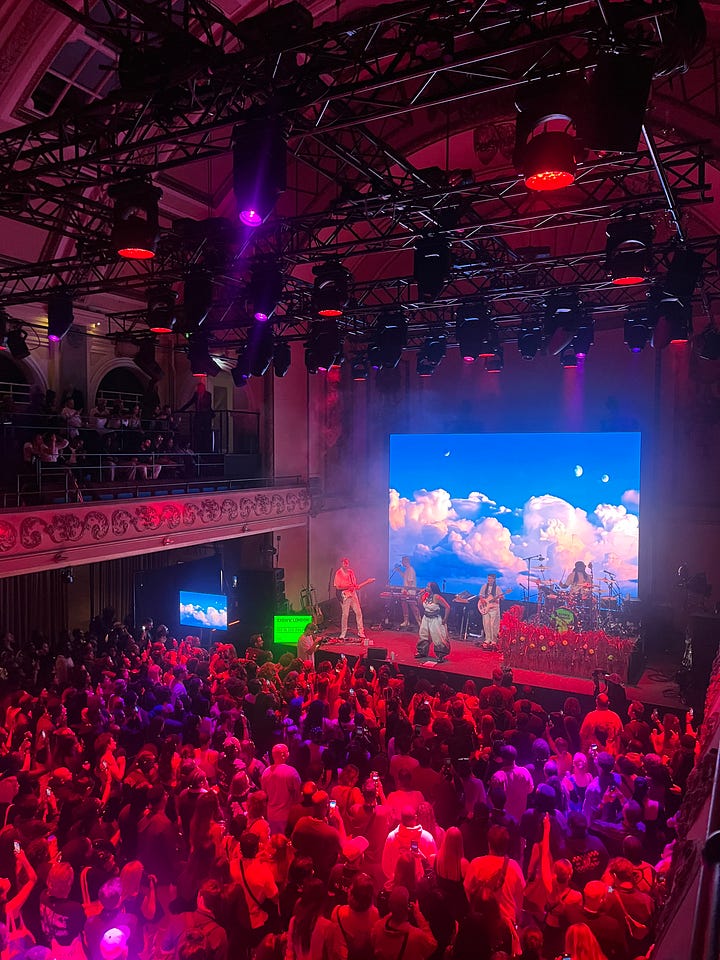
The only element that somewhat remedied this were day passes for £25, which is a good deal for London if you catch a few live acts (although I hear these were a late addition). However, it was not communicated that this didn’t cover entry to that day’s conference talks, as a friend of mine discovered when she was unceremoniously turned away at the door of a half-full panel because she had a “wristband” and not a “pass”. It’s moments like this that turn someone from a potential advocate to a detractor in one fell swoop.
In terms of the content I was able to attend (somewhat in part to my very generous client gifting me her Platinum pass) I definitely caught some worthwhile shows. Pa Salieu headlining Village Underground as part of Sony Music Publishing’s event was a highlight, as was Nao at Shoreditch Town Hall. In between that I caught some of Eastern Margins, Mixtape Madness and Converse’s stages, who all know how to programme with ease.
In terms of the talks, I caught three about fashion and retail. The first was Nicholas Daley talking about “Authenticity Within Culture and Community.” It was treat to see Daley talk about his work and I learnt a lot about his collaborations, but I only caught the second half because for some reason it started 15 minutes early and this was not communicated anywhere.
The second talk was the “Future of Fashion Retail” with panelists including the CEO of Joseph, Barbara Campos, and Lucy Yeomans, Founder of Drest. As with most talks, it was only a 30 minute slot, which didn’t allow for too much depth, especially across four guests. I was looking forward to gathering some insider insight, but the takes felt fairly obvious and with everyone ‘promoting’ their brand in some way, it didn’t light me on fire.
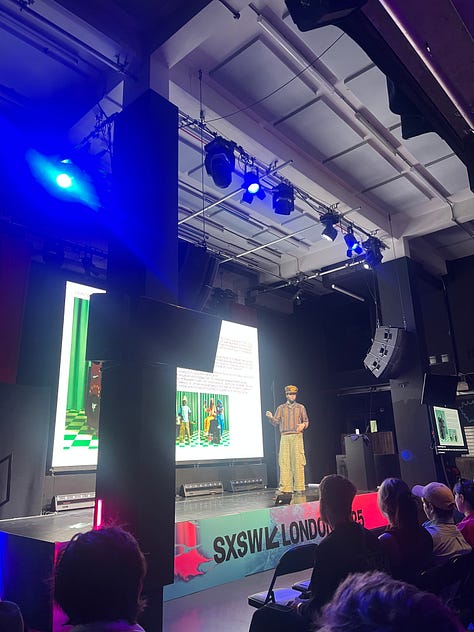


However, the third talk was a saviour. Hosted by the charismatic Adam Baidawi, Deputy Global Editor of GQ, “Savile Row to Streetwear: The Changing Face of British Menswear” the panel consisted of the nominees for the BCF/GQ Designer Fashion Fund (won by jewellery designer Bleue Burnham). With guests including Labrum founder Foday Dumbaya, and designer Saul Nash, it was a lively conversation with personal insight into the changing face of British menswear, from the people at the cutting edge.
Overall, I would say SXSW London is a cousin of Austin, not a sibling or child. It didn’t contain the same DNA of “what’s around the corner” spontaneity that Austin emanates. That’s partly down to London just not being an especially spontaneous city, and partly because it wasn’t a very accessible event, meaning the audience were mostly there for work purposes, and not following their personal taste. It felt like the partnerships SXSW did make with more grassroots platforms were necessary but also not at the centre of its purpose. It was almost paying lip service to SXSW of days gone by without committing to that narrative.
It sounds like SXSW will be back in London next year, so my hopes are:
SXSW is a more open-door, accessible programme with less content to make room for sessions that actually inspire and offer audience engagement.
Music is more centralised, as this is the most powerful connector of people.
The £25 day passes are still available (with better communication on what it offers).
There is more connection to the grassroots scenes to find those hidden gems, as well as the headline acts that we feel lucky to experience in intimate venues.
The brand does an educational job on how to pronounce “SXSW” a la the Loewe campaign.
VERBATIM
WHAT CHANGES WOULD YOU LIKE TO SEE IMPLEMENTED FOR SXSW LONDON NEXT YEAR?
NIAMH KELLY - CO-FOUNDER OF AKA
“DEPTH OF CONTENT: Most talks felt like a sales pitch instead of being about creativity or whatever the discussion was actually centred on. It would be ideal to dive deeper into the topic at hand.”
PLANNING: I would love to see a feature that lets you easily share your chosen schedule in the SXSW London app. It would make planning and syncing with others much smoother.
MERCHANDISING: More could’ve been done with the merch! A collab with emerging UK-based designers or brands would’ve been a great way to spotlight local talent and give it a proper USP.
CROWD CONTROL: Great music talent across the line-up, but getting into the shows was tough. More accessible venues or larger spaces could help for those high-demand moments next time.”
SHORT READ
CORE BELIEF #15: DON’T LOSE SIGHT OF THE LITTLE GUY
It can be attractive to go for the big names and attract the big people. For instance, collecting as many brands as possible to sponsor an event just for the logo recognition, or inviting known names to take part in a discussion. And sometimes this is the right move.
But have we got a little too obsessed with those ever-present identities and lost sight of everyone else that’s coming up? How are we going to nurture or inspire talent if we are transfixed on those who have already made it without looking back? It’s a tricky balancing act, I acknowledge that. But there is a huge middle-ground of brands, talent and collectives that have built something respected and substantial enough to learn from and celebrate, while still being relevant and connected enough to the real world to resonate. Let’s make sure we are keeping them in the conversation and not leap-frogging to the shiny names we already know enough about.
MUSIC CORNER
LORDE - VIRGIN
Lorde is back after 4 years since Solar Power, a summer soundtrack if there ever was one, with Virgin. The New Zealand artist broke form and moved away from her long-time collaborator Jack Antonoff, and worked with Jim-E Stack as a co-writer and co-producer across the 11 tracks.
Lorde’s sound cannot be altered by a change in producer. She has such a clear energy and tone that is consistent even across new themes and a more mature pen. This time we feel Lorde unravel her identity in the midst of heartbreak, moving between sadness, dissonance and closure while somehow still delivering bangers like ‘What Was That’.
Sometimes an artist like Lorde who started so young and has received such high critical acclaim can never quite get back to the genius that launched their career. But I do believe that Virgin shows us Lorde at her most vulnerable incarnation, and it’s glorious.
Don’t forget to follow IN SITU on Instagram @insitu.njd, and check out my website at nicolajdavies.com.



